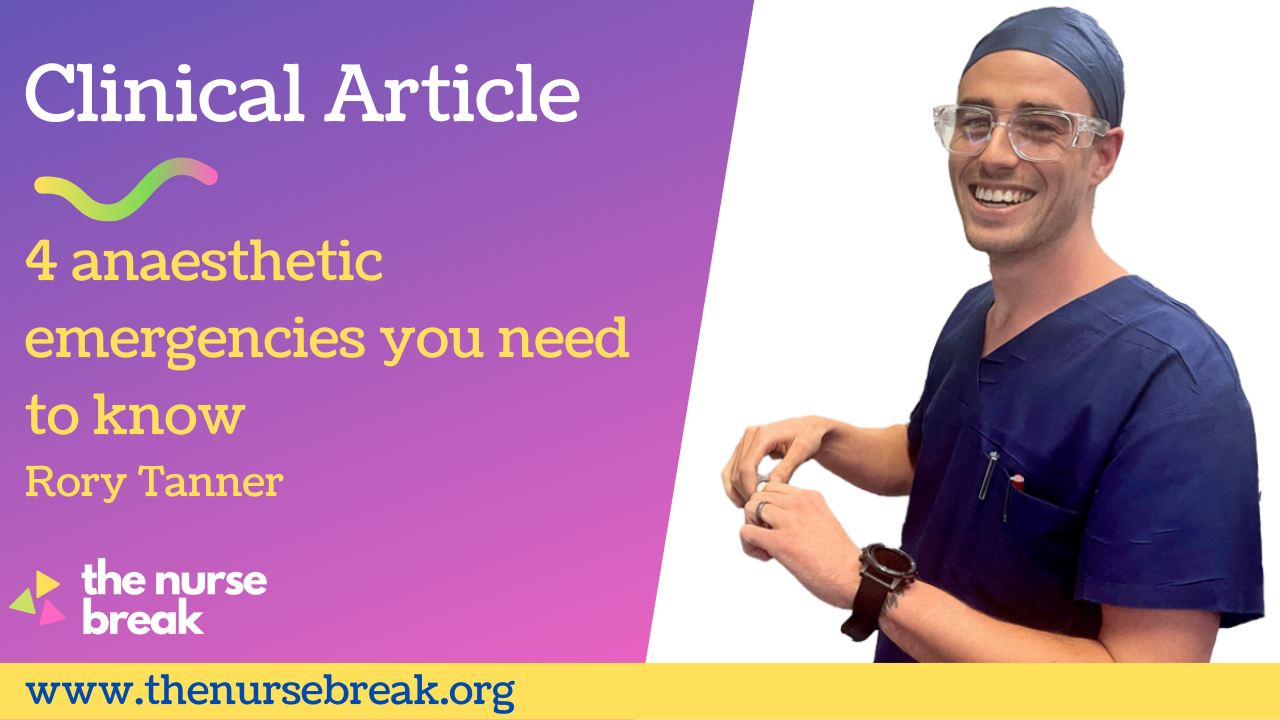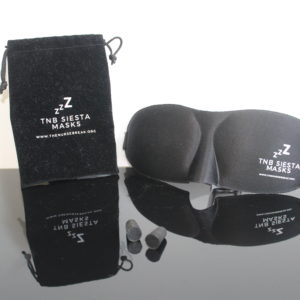Table of Contents
4 anaesthetic emergencies that new nurses need to be aware of?
Written by Rory Tanner. Original full article here when we interviewed him about his career. He is a Peri-anaesthesia Clinical Nurse Specialist, Educator and Facilitator and the Founder of the Aussie Nurse Educator. Worth checking it out!
The four main emergencies in anaesthesia practice are “cannot intubate, cannot oxygenate” (CICO), anaphylaxis, local anaesthetic toxicity and malignant hyperthermia.
‘Cannot intubate, cannot oxygenate’ (CICO)
CICO is an anaesthetic airway emergency where the induction of anaesthesia has commenced and the patient’s airway is requiring management. In this instance, the normal care would be to use a bag valve mask and ventilate or breathe for the patient, however in a CICO event, you are unable to ventilate and hence unable to oxygenate. In a complete CICO emergency, there has usually been a number of attempts at intubation which have been unsuccessful, by one or many anaesthetists. The implication of this is that if it is not managed promptly, the patient will become hypoxic and die. We use two internationally recognised techniques for the management of this.
The first is known as a needle cricothyroidotomy (14g IVC inserted into the anterior aspect of the cricothyroid membrane) for the purpose of oxygenation. The second technique is scalpel, bougie and endotracheal tube technique where the tube is inserted through the anterior aspect of the cricothyroid membrane for the purpose of ventilation. As a nurse you need to know the contents of these kits, know how to maintain them, what they are utilised for in clinical practice and how to prepare them for use.
Anaphylaxis
Anaphylaxis is the severe hypersensitive response the body has to an allergen that requires epinephrine to manage. Anaphylaxis is sometimes fast on onset or sometimes it has a slow onset. The difficulty in anaesthesia is that people are reacting to an allergen for the first time, but also are unconscious and unable to verbalise their symptoms. We can only see the signs of the reaction, not the symptoms.
What nurses need to be aware of is that in anaesthesia nursing practice, epinephrine is widely available in the immediate area you are working in, and all staff (including nurses and doctors) are aware and able to manage epinephrine. Specifically, in the perioperative environment there is the perioperative management of anaphylaxis response cards that assist with the management of different severity of anaphylaxis. The other clinical aspects to be aware of is that patients in anaesthesia have a direct IV line for circulatory access unlike other patients in other areas of the hospital.
Local anaesthetic toxicity
Local anaesthetic toxicity is a life-threatening adverse event that may occur following the administration of local anaesthetic via a variety of routes and concentrations. It has diverse cellular effects in the CNS and cardiovascular system, for example restlessness, blurred vision, tremors, dizziness, anxiety and tachycardia.
In anaesthetic practice, the risk of local anaesthetic toxicity can be mitigated by targeting modifiable risk factors such as the use of ultrasound equipment for regional anaesthetic techniques, and carefully calculating medication requirements. In perioperative nursing practice, we use a systematic approach to the management of this using lipid emulsion therapy as well as prompt seizure management and the careful selection of cardiovascular supportive pharmacotherapy.
Malignant hyperthermia
Malignant hyperthermia is a severe reaction to certain medications used in anaesthesia. When this event usually occurs, the patient is in the process of being induced into generally anaesthesia and typically arises with signs including hypercarbia, hyperthermia, rigid muscles or spasms, tachycardia and others. The progression of malignant hyperthermia is often very fast and therefore a prompt response is required. In anaesthetic nursing, there is a lot of training in regards to malignant hyperthermia and a lot of specific technical skills and aspects to the nursing role that need to be adhered to.
There are specific technical roles the anaesthetic nurse has with the anaesthetic machine, when a patient is identified at risk of malignant hyperthermia. Every perioperative environment has a malignant hyperthermia response trolley or kit, which includes access to dantrolene sodium, which is the only medication able to reverse the effects of this medical condition.





